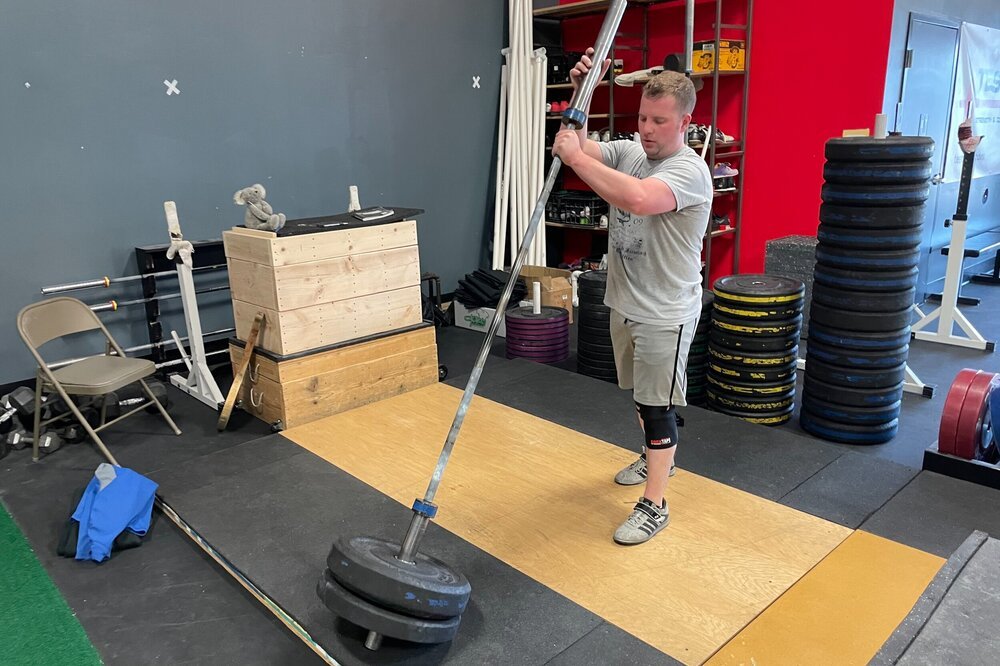Tips and Tricks for the New Lifter - Part II
/Evan demonstrates a handy trick for loading and unloading your deadlift.
(A Blast from the Past article originally posted on 04/16/21)
In Part I of this series, we discussed several tips and tricks that might help you as a new lifter, and now, in Part II, we’re back with a few more. With practice, using these tactics may seem obvious, and you might wonder why you didn’t think of them earlier, but when you’re starting out, these types of tips are often anything but obvious.
Easy Loading for Deadlifts
When you’re loading (or unloading) your deadlift with more than one 45 lb plate per side or more than one bumper plate per side, roll the plate (on the side you’re currently loading) up onto a 2.5 lb plate. This will raise the 45 lb plate or bumper plate off the ground just enough that it makes it easier to slide on the next plate (see the photo above).
Of course, using a deadlift jack is makes things even easier, and we have a video on how to make one (click here or scroll down to the end of this article), but in lieu of that, using a 2.5 lb plate works quite well.
Holding Valsalva for Multiple Reps
You can hold your Valsalva (i.e., your tightly held breath) for multiple reps on the bench press. Holding your Valsalva for 2-3 reps is pretty common on the bench press, and as long as you aren’t running out of oxygen, doing so works very well as you don’t have to get tight again before the next rep.
Two warnings, though: first, don’t take it as a personal challenge to see how many reps you can get on one breath - this may not end well - and second, holding your Valsalva for multiple reps doesn’t usually work very well for lifts other than the bench press.
Easy Unloading for Bumper Plates
If you’re finished snatching, cleaning, or deadlifting (even rowing), and you have multiple bumper plates on each side of the bar, here’s how to unload your bar: first, take the collars off both sides of the bar. Second, unload all of the plates from the left side of the bar. Third, raise the empty left side of the bar - walking it upward (the right side of the bar remains on the ground) until the bar is sitting vertically inside the stack of plates on the right side of the bar. Finally, simply lift the bar out of the stack, put the bar away, and then put the plates away.
Evan shows how to easily remove multiple bumper plates at once.
We hope these tips help you get stronger and live better, and perhaps we’ll be back with a Part III in the future.
-Phil
PS: Whenever you want even more Testify in your life, here are some free resources:
Book a free intro and strategy session with us HERE.
Pick up a free copy of Testify’s Squat Guide: 12 Tips to Improve Your Squat Now HERE.
Get our free weekly email - containing useful videos, articles, and training tips - HERE.
Follow Testify on Instagram HERE.
Subscribe to Testify’s YouTube channel HERE.
(Some links may be affiliate links. As an Amazon Associate, Testify earns from qualifying purchases.)







